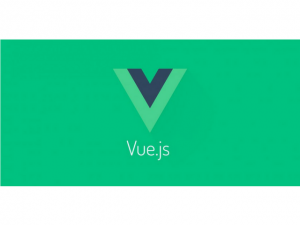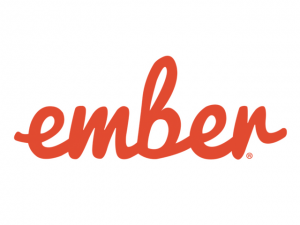Top 5 JavaScript Frameworks and Libraries in 2017
The popularity of JavaScript continues to grow. In 2016, we witnessed big changes with the release of the full AngularJS upgrade and the announcement of Angular 2, the final jQuery championship, which is used in 96.5% of all sites, the evolution of ECMAScript, two updates of Node.js in April and October respectively, and even more.
What to expect by the end 2017?
Here’s what we know by this time: Google just released an Angular 4 on March 2, 2017, and recently a BootStrap 4 Beta Version was released.
Meanwhile, JavaScript ranked among the best languages to learn from the IBM version in 2017. At this stage, it is used for both client and server parts and helps design attractive interfaces, enriches web applications with numerous functions and features, modifies real-time web pages and much more.
In the meantime, JavaScript frameworks can become a magic wand for quick development of web applications. They serve as a framework for individual application pages, allowing developers to worry less about the structure of code or support at a time when they are focused on creating complex interface elements.
The advantages of using JavaScript frameworks:
- Efficiency – projects that would have taken months and hundreds of lines of code before, can now be implemented much faster with well-structured ready-made templates and functions.
- Security – the best JavaScript frameworks have a proprietary security system and are supported by a large community whose members and users simply act as testers.
- Expenses are the majority of open source frameworks and are free. Because they help programmers to develop custom solutions faster, the final price of the web application will be lower.
Here is the list of top JavaScript Frameworks in 2017:

After the long-awaited release of Angular back in 2016, its popularity has reached new heights, but it will keep the bar without retreating and in 2017.
- Angular.js is often called the MVW (Model-View-Whatever) framework and among the main benefits for start-ups and medium-sized companies are rapid code writing, fast testing of any part of the application and two-way data binding (changes in the backend immediately reflected on the user interface ). Since the release of his ecosystem has gone beyond imagination. Now it is deservedly called the most used JS framework for developing single-page applications (SPA Single-Page-Applications) and it boasts the largest community of developers.
- Angular2 comes with a large list of features that will allow you to develop everything from the web to desktop and mobile applications. The framework is built on TypeScript from Microsoft with the aim of making JavaScript more flexible and attractive for large enterprises. Ng2 features a component-based architecture, improved DI (dependency injection), efficient logging, inter-component interaction, and much more.
Both Angular is the best choice for enterprise applications or for programming environments with high standards for code readability.

Despite the fact that it is more a library than a framework. It stands for the user interface of Facebook and Instagram, showing its effectiveness within dynamic applications with high traffic (bandwidth).
- It is rightly considered the fastest growing JS framework: today there are about 1000 authors Github. In MVC (Model-View-Controller), the React.js model acts as a “V” and can be easily integrated into any architecture. Thanks to the use of a virtual DOM tree, it provides greater performance growth compared to Angular 1.x. In addition to this, React components can be created and reused in other applications or even transferred for public use.
- Despite the fact that React is more complicated in the study, it makes application development simple and easy to understand. In addition, it can ideally be suitable for complex, impressive software solutions with a high degree of load.

Vue 2.0 was also introduced in 2016 and took the best of Ember, React and Angular, putting it all in a convenient package. He proved that maybe (he was) faster and more compact React and Angular 2.0.
- Deepening, Vue.js offers two-way data binding (as in AngularJS), server-side rendering (as in Angular2 and ReactJS), Vue-cli (scaffolding tool for quick start) and optional support for JSX. Its creator claims that Vue2 is one of the fastest freeware in the whole.
- Vue.js is the best choice for rapid development of cross-platform applications. It can become a solid foundation for high-performance one-page applications (SPAs) and a cost-effective solution for those cases where performance is more important than good code organization or application structure.

Back in 2015, Ember was named the best JS framework, leaving behind React and AngularJS. Today it boasts a huge online community, regular updates and widely applied best practices in Java Script, which guarantee the ultimate experience right out of the box.
- Ember has a two-way data binding, as in AngularJS, keeps both the look and the model in sync all the time. The Fastboot.js module provides a fast rendering (rendering, recalculation) of the server-side DOM on the server side, improving the presentation of complex user interfaces.
- EmberJS is commonly used for complex multi-functional web applications and Web sites.
Among the top users of:
- Chipotle,
- Blue Apron,
- Nordstrom,
- Kickstarter,
- LinkedIn,
- Netflix.
Moreover, it is most simple to learn and there is a sea of online teaching aids and guides available.

- Meteor.js is one of the most popular JS frameworks, but it steadily walks with a ton of functions for backend development and front-end rendering, database management and business logic. Since the release in 2012, its ecosystem has grown at a dramatically rapid pace. This full-stack platform allows you to quickly develop the web and mobile applications. From a performance standpoint, all changes in the database are immediately transferred to the user interface and back, without any apparent time loss due to the difference in languages or the response time of the server.
Meteor.js covers all stages of the software development cycle and takes care of such processes as linking, concatenation of files and so on. The framework is now used to develop real-time applications in companies such as Mazda, IKEA, Honeywell and many others.
Conclusion
The choice of the framework is not based on the functionality that each of them can offer. It depends on the initial objectives of the company, the requirements for the project, the overall functionality of the framework, and how it can be applied in each case.
When it comes to fast web development or prototyping, JS frameworks are the most popular for use and 2017 will not be an exception. These frameworks and libraries have already changed the way that JS interacts with HTML and CSS to combine views in browsers and on native platforms.





